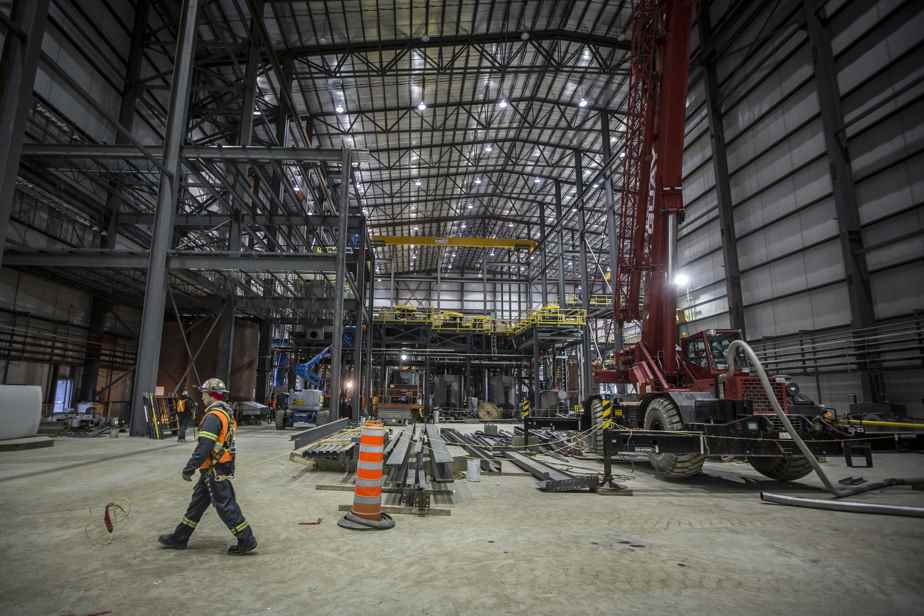Quebec is in the process of welcoming the only producer of lithium concentrate in North America. It is an unknown company, Sayona, which owns it.
A subsidiary of Australia’s Sayona Mining, Sayona will operate the North America Lithium Complex (LAN) mine in La Corne, Abitibi, in the first quarter of 2023.
The company has just obtained the last of the 130 permits required to start production. The mine already employs more than 100 people in the field. When the mine opens in a few months, there will be between 150 and 200 workers.
It is in fact a relaunch of the exploitation of a deposit for which previous attempts have failed.
The mine will indeed be in its third life since the beginning of the 2010s. It was operated under the name of Quebec Lithium (2012-2014) then North American Lithium (2016-2019). The latter belonged to the Chinese Jien International and CATL.
Preferred by Investissement Québec, Sayona (75%) and its American partner Piedmont Lithium (25%) bought the assets of North American Lithium (NAL) as part of a legal process on 1er August 2021. NAL had previously placed itself under the protection of the Companies Creditors Arrangement Act.
Since then, Sayona has invested 350 million in Quebec in the acquisition of various mining properties and in the revival of LAN.
Why will Sayona succeed?
“First, the founders of Sayona are mining operators who have already successfully completed a similar project in Australia called Altura,” replied Guy Laliberté, strategic adviser to Sayona, when The Press asked him the question. “Secondly, we are also going to use the Authier deposit, of better quality, with less iron, to supply the La Corne concentrator. »
The former project director for ArcelorMittal and SNC-Lavalin also argues that the automotive industry in 2022 is more ready to go electric than in 2014. Mr. Laliberté is on his fourth mine project after those of the Baffin Island, Sierra Leone and Liberia.
A leading lithium producer in North America
-

PHOTO ALAIN ROBERGE, THE PRESS
Guy Laliberté, strategic advisor to Sayona, owner of the La Corne lithium mine in Abitibi
-

PHOTO ALAIN ROBERGE, THE PRESS
Pictured is a lithium carrot extracted from La Corne and spodumene flour, 6% concentrated lithium
-

PHOTO ALAIN ROBERGE, THE PRESS
Cindy Valence, Chief Sustainable Development Officer of Sayona, and Guy Laliberté, Strategic Advisor
1/3
The meeting took place at Sayona’s head office in downtown Montreal. Since almost all of Sayona Mining’s assets are located in Quebec, the Montreal office feels like a head office. The head of the Australian parent company, Brett Lynch, was in Montreal at the time of our visit.
For the time being, Sayona Mining is riding the lithium price wave. The price of spodumene, a kind of lithium flour, has risen from $800 a ton in 2017 to over US$5,000 this year, propelled by the popularity of electric vehicles around the world.
Three years ago, Sayona was worth 10 million on the Stock Exchange. This month, we are worth just under 2 billion.
Guy Laliberté, strategic advisor to Sayona
If Sayona were listed on the Toronto floor, it would have a market capitalization greater than that of Laurentian Bank or Champion Iron, operator of the Bloom Lake iron mine near Fermont.
Since 2019, Sayona has been developing around two hubs: the Abitibi hub and the Baie-James hub. According to Mr. Laliberté, Sayona holds 35% of lithium resources in North America with more than 100 million tonnes.
Abitibi Pole
The pole revolves around the La Corne concentrator, the restarting of which required an investment of 100 million. The equipment processes ore containing about 1% lithium to produce a 6% lithium concentrate, also called spodumene. The ore will also come from the Authier deposit, near Amos. The annual production capacity will reach 226,000 tons of concentrate.
“Sayona has recovered a project industrially the most equipped in Quebec, since the previous owners had set up a plant that goes to the lithium carbonate facilities,” says geology professor Michel Jébrak, co-author of the book. Lithium objective: succeed in the energy transition. He visited the La Corne deposit last October.
Lithium carbonate is used as an input in the manufacture of cathodes, one of the two poles of the lithium-ion battery used in electric vehicles. Lithium hydroxide plays the same role for luxury vehicles.
“We are thinking of continuing the carbonate sector. Feasibility studies by Hatch are underway,” says Mr. Laliberté. Unlike the Chinese, Quebec has the advantage of being able to transform lithium with clean energy.
If the study is conclusive, the objective is to produce 23,000 tons of carbonate there, potentially in 2026. The project will require funds of 300 to 350 million. Carbonate these days sells for $40,000 a ton.
James Bay Pole
At the same time, a subsidiary, called Sayona Nord, holds 100% of the Lac-Albert deposit and, since May 2021, 75% of the Moblan deposit. The other 25% is owned by the provincial government through Investissement Québec.
It is considered to install a concentrator on the Moblan site. “We could thus make hydroxide from the quantities that we will take out of the Moblan concentrator”, indicates Mr. Laliberté.
Moblan’s concentrator could cost between 400 and 500 million. The potential is to produce 100,000 tons of lithium hydroxide from 2027, an amount corresponding to the needs of Tesla or Ford in a year. The hydroxide sells for US$50,000 per ton.
By 2030, Sayona has identified projects worth $2.7 billion. Investissement Québec will be a partner of choice for the continuation of its secondary lithium transformation projects, underlined Mr. Laliberté.
Strengths
– Experienced mining operator
– Carbonate installations already half completed at La Corne
– Its partner, Piedmont Lithium, is integrated into the North American automotive production chain.
Weaknesses
– Size of the company altogether modest
– Little expertise to transform spodumene into carbonate and hydroxide
– Considerable financial needs by 2030
